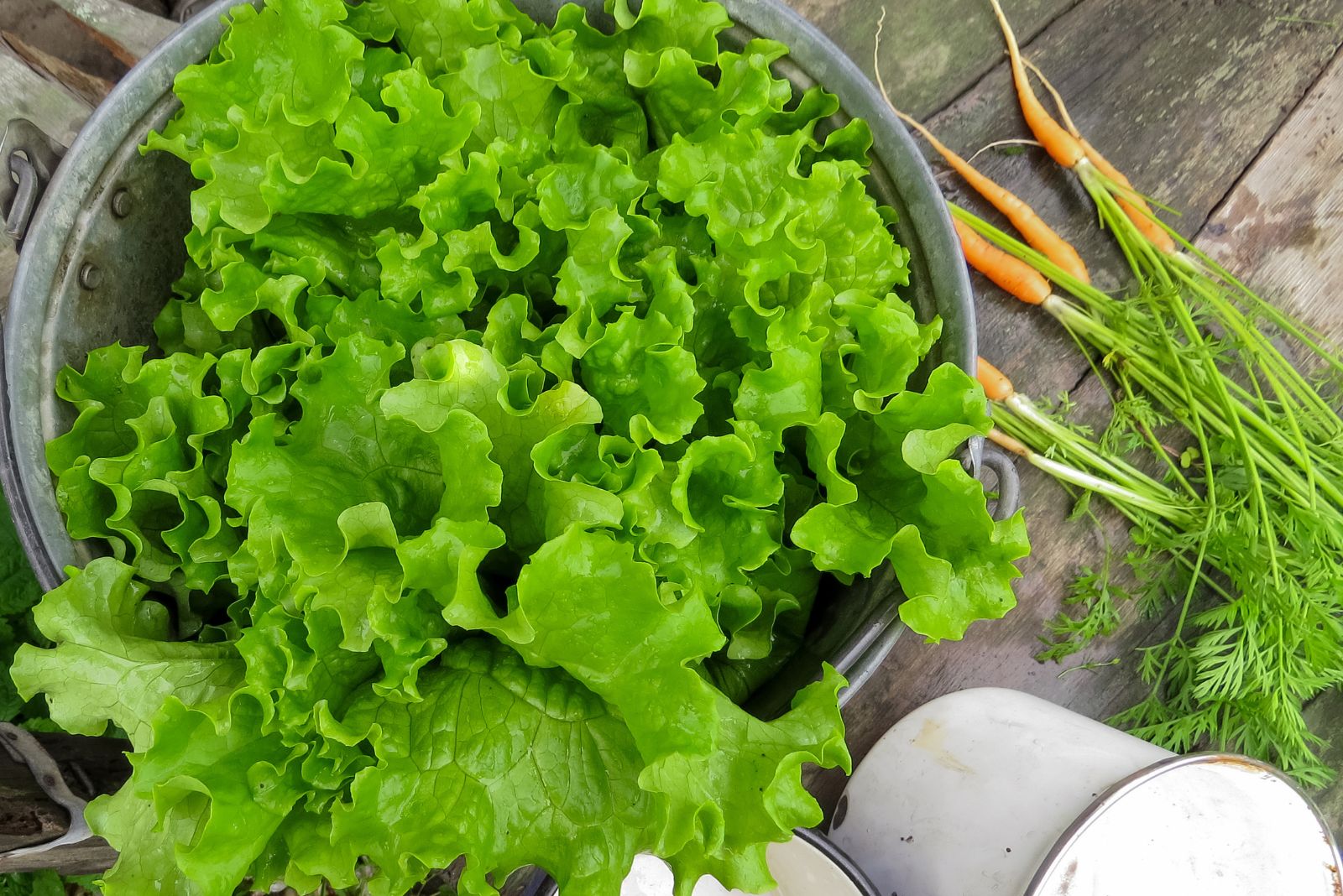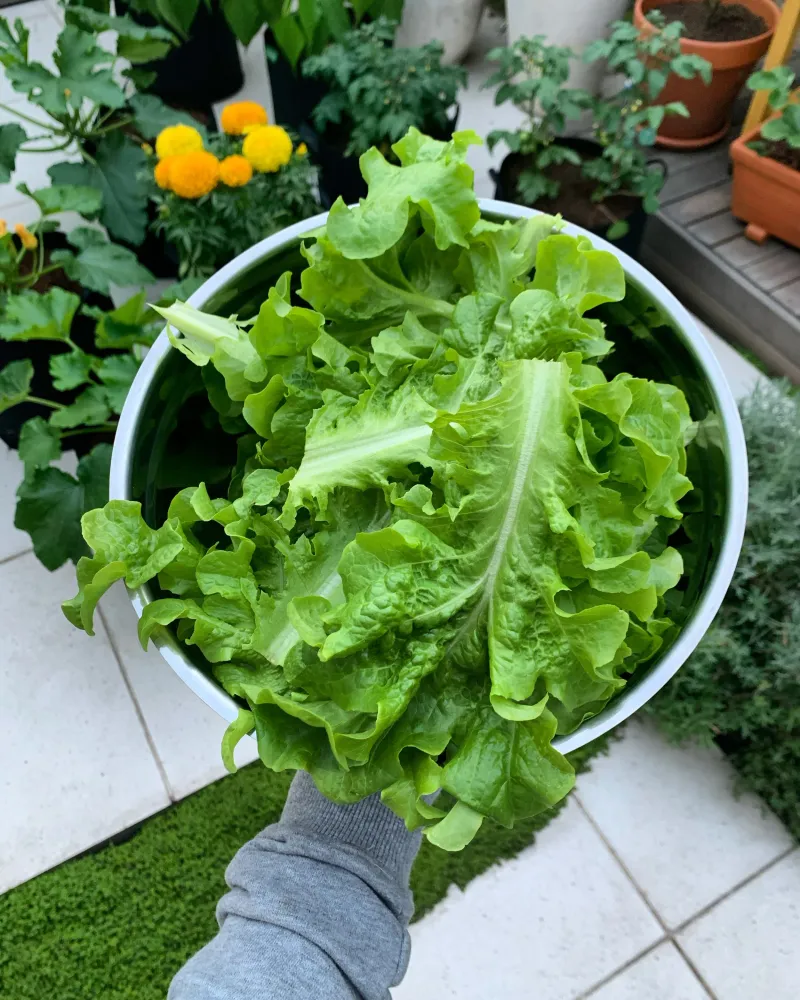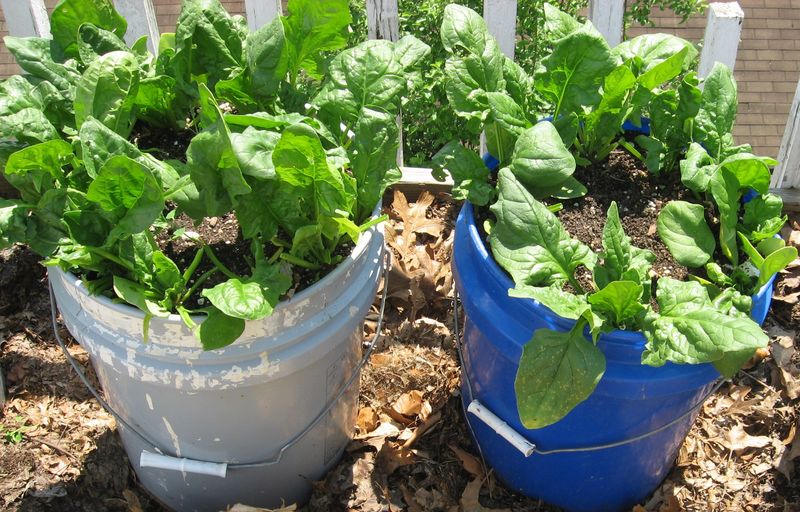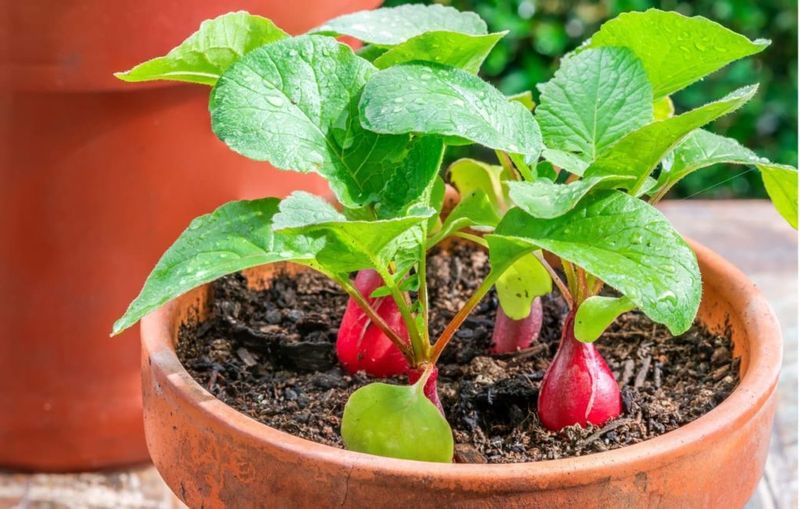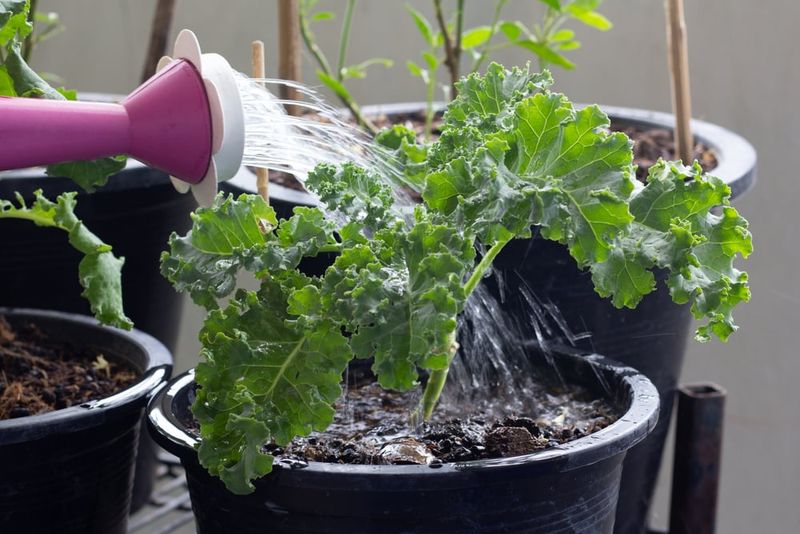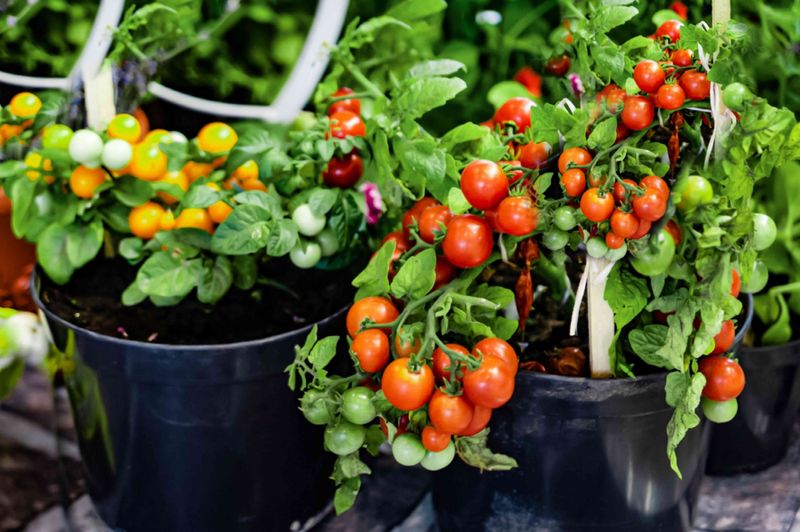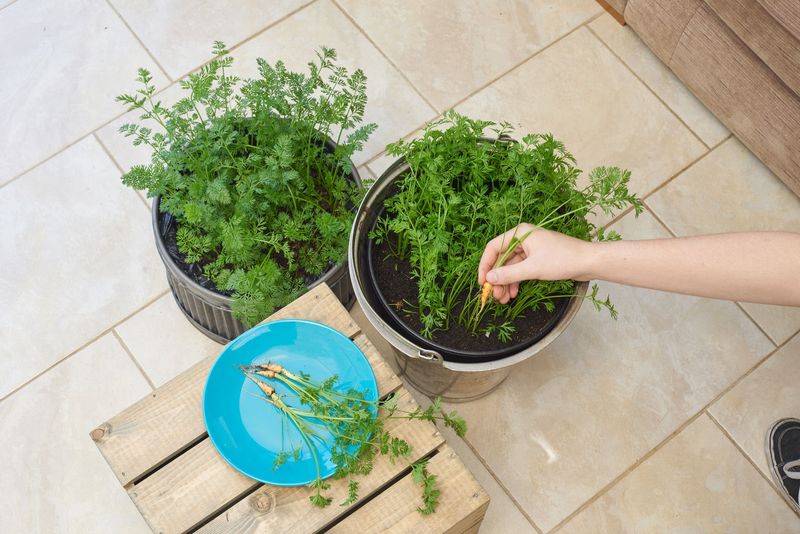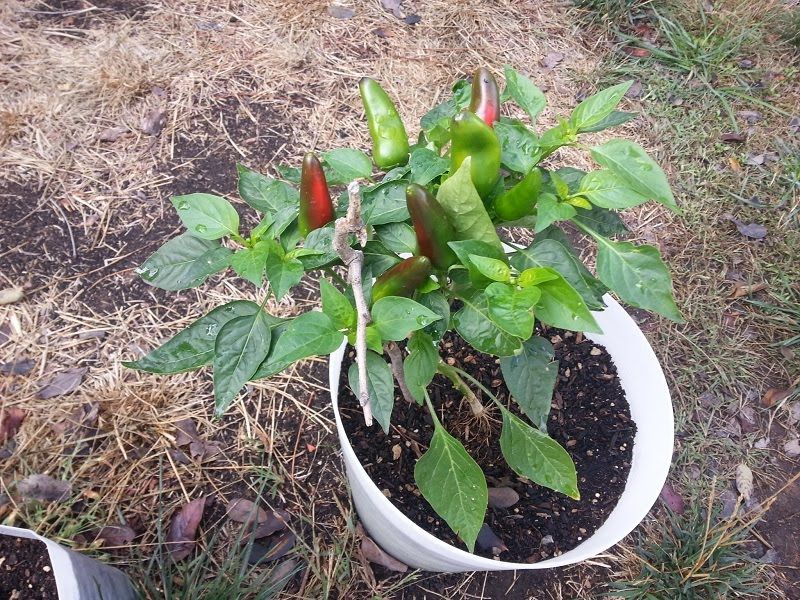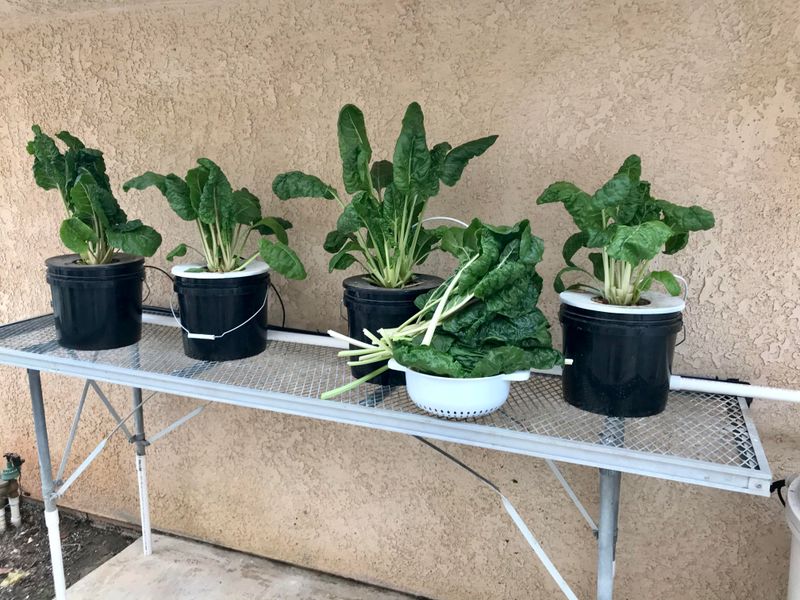Some West Virginia yards leave little room for big garden beds, yet a simple bucket can turn even the smallest porch or patio into a steady source of fresh food. Many vegetables adapt easily to tight spaces and keep producing through shifting seasons when given the right container and care.
From crisp greens to compact peppers, these plants stay productive long after larger gardens slow down. With a few good choices and a sunny corner, a bucket garden can provide year round harvests that fit any home, any schedule, and any level of experience.
1. Lettuce
Crisp, homegrown lettuce tastes miles better than anything from the store, and buckets make it incredibly easy to grow. You can start seeds every few weeks to always have fresh greens ready for salads and sandwiches.
Lettuce loves cooler temperatures, which means it thrives during West Virginia’s spring and fall months. When summer heat arrives, simply move your bucket to a shadier spot or bring it indoors near a sunny window.
A five-gallon bucket works perfectly for multiple lettuce plants. Just make sure to drill drainage holes at the bottom and use quality potting soil for best results.
2. Spinach
Packed with nutrients and flavor, spinach is one of the hardiest vegetables you can grow in containers. It actually prefers the cooler weather that West Virginia offers much of the year, making it ideal for bucket gardening.
Plant spinach seeds directly in your bucket during early spring or late summer. Within weeks, you’ll have tender leaves perfect for cooking or eating raw in salads.
During winter months, bring your spinach bucket into a bright room or garage with windows. The plant tolerates light frost but grows better with some protection from harsh conditions.
3. Radishes
Fast-growing and fun to harvest, radishes give you results in just three to four weeks from planting. Kids especially love pulling these colorful vegetables from the soil and discovering the surprise underneath.
A standard bucket can hold dozens of radish seeds since they don’t need much space. Scatter seeds across the soil surface, cover lightly, and keep the soil moist for quick germination.
Radishes handle cool weather beautifully, so you can grow them almost any time except the hottest summer weeks. Their peppery crunch adds zip to salads and sandwiches all year long.
4. Kale
Tough as nails and loaded with vitamins, kale stands up to whatever weather West Virginia throws at it. This superfood actually tastes sweeter after experiencing a light frost, making it perfect for fall and winter container growing.
One kale plant per five-gallon bucket gives it room to develop those beautiful, ruffled leaves. Water regularly and harvest outer leaves first, allowing the center to keep producing.
When temperatures drop below freezing, move your kale bucket to a protected porch or unheated garage. It bounces back quickly and keeps producing through surprisingly cold conditions.
5. Cherry Tomatoes
Nothing beats the burst of flavor from a sun-warmed cherry tomato picked right off the vine. Compact varieties work wonderfully in buckets and produce abundantly throughout the growing season.
Choose a five-gallon or larger bucket and add a small tomato cage for support as your plant grows taller. Place your bucket in the sunniest spot available for maximum fruit production.
When cold weather approaches, bring your tomato plant indoors to a bright window. While production slows during winter, you can still enjoy occasional fresh tomatoes when you crave that summer taste.
6. Carrots
Sweet, crunchy carrots grow surprisingly well in deep buckets, especially shorter varieties bred for container gardening. The key is choosing a bucket at least twelve inches deep to give roots room to develop properly.
Fill your bucket with loose, fine-textured potting soil without rocks or clumps. Carrot seeds are tiny, so sprinkle them carefully and thin seedlings once they sprout to prevent overcrowding.
Carrots tolerate cold weather remarkably well and can even survive light snow. Growing them in movable buckets means you control their environment perfectly, bringing them inside during the harshest winter storms.
7. Green Onions
Want the easiest vegetable ever? Green onions regrow endlessly from their roots, making them perfect for beginners and experienced gardeners alike. Simply plant the white root ends in soil and watch them shoot up within days.
A shallow bucket works fine since green onion roots don’t grow very deep. You can pack them fairly close together for a continuous harvest throughout the year.
Snip off what you need for cooking, leaving about an inch above the soil. The onions keep regrowing, giving you fresh flavor for soups, salads, and stir-fries whenever you want them.
8. Peppers
Bell peppers and hot peppers both thrive in bucket containers when given proper care and sunlight. A single pepper plant in a five-gallon bucket can produce dozens of fruits throughout the growing season.
Peppers love warmth and sunshine, so keep your buckets in the brightest outdoor location during summer. They grow slower than tomatoes but reward your patience with crisp, flavorful vegetables.
Before frost hits, bring pepper buckets inside to a sunny window or under grow lights. With adequate light and warmth, pepper plants continue producing through winter, though at a slower pace than summer.
9. Swiss Chard
Gorgeous enough to be an ornamental plant, Swiss chard brings stunning colors to your bucket garden while providing nutritious greens. The rainbow variety features stems in brilliant reds, yellows, and oranges that brighten any space.
Chard tolerates both heat and cold better than many vegetables, making it remarkably reliable for year-round growing. Plant seeds or seedlings in spring and keep harvesting outer leaves throughout the seasons.
This vegetable rarely complains about temperature changes, though it appreciates some shade during the hottest summer days. Move buckets indoors during severe winter weather to keep your chard producing continuously.

